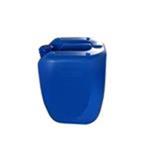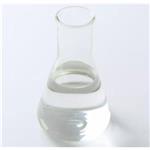It finds its application in the reaction of the dilithio-derivative with an aldehyde, followed by conversion to the episulfide by reaction with ethyl chloroformate, and desulfurization with triethyl phosphite, leads to the (E)-2-alkenoic acid with high stereoselectivity. It is used as depilatories, hair straightening agent, hair waving agent, and reducing agent in cosmetic industry.
Ethyl thioglycolate (ET) could be employed as a ligand molecule developed for property manipulation of perovskite films. ET can lower the surface energy of perovskite facets and induce secondary growth of grains, giving films with higher crystallinity and lower defect density. Meanwhile, both carbonyl and sulfhydryl in ET can bind to the Pb2+, thus forming bidentate anchoring on the surface for defect passivation. Besides, the perovskite/ET/C60 interface presents improved charge transfer owing to the well-aligned energy levels. Importantly, ET demonstrates effective management of I2 and PbI2, thereby preventing accelerated degradation and lead leakage of devices. Thanks to the multiple effects of ET, the resulting devices exhibit significantly enhanced ambient stability over the course of 800 h and a thermal stability of over 1500 h while maintaining 80.4% of its original efficiency[1].
[1] Wang, Yu et al. “Ethyl Thioglycolate Assisted Multifunctional Surface Modulation for Efficient and Stable Inverted Perovskite Solar Cells.” Advanced Functional Materials 30 1 (2024).



